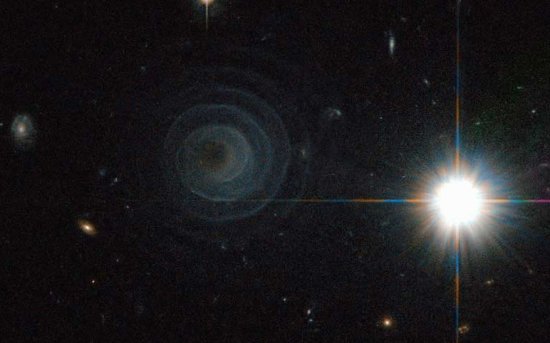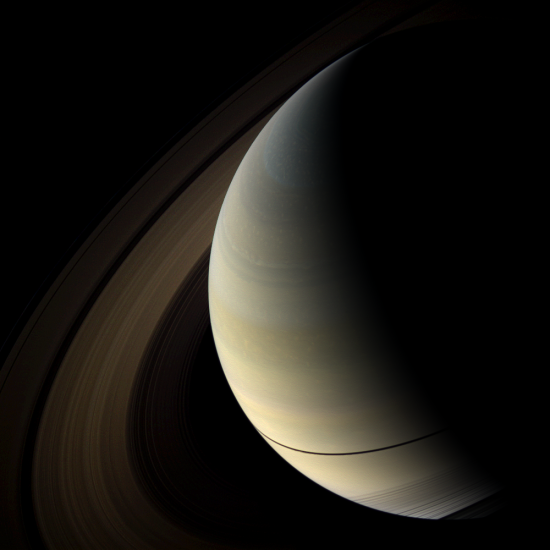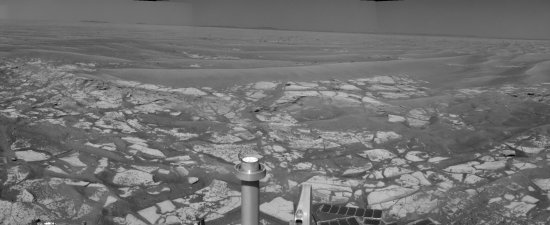This amazing Hubble image, showing a strange spiral to the left of the bright star, is not of a galaxy. Instead, it is a binary star system where the material from one star is being sucked away from it by the other, thus producing the spiral pattern.

What is most fascinating about this discovery is that this kind of phenomenon has been predicted for decades, by both astronomers and science fiction writers. Consider for example this quote from Larry Niven from his short story, The Soft Weapon, where he describes what he thinks the binary star Beta Lyrae might look like:
There was smoke across the sky, a trail of red smoke wound in a tight spiral coil. At the center of the coil was the source of the fire: a double star. One member was violet-white, a flame to brand holes in a human retina, its force held in check by the polarized window. The companion was small and yellow. They seemed to burn inches apart, so close that their masses had pulled them both into flattened eggs, so close that a red belt of lesser flame looped around them to link their bulging equators togehter. The belt was hydrogen, still mating in fusion fire, pulled loose from the stellar surfaces by two gravitional wells in conflict.
The gravity did more than that. It sent a loose end of the red belt flailing away, away and out in a burning Maypole spiral that expanded and dimmed as it rose toward interstellar space, until it turned from flame-red to smoke-red, bracketing the sky and painting a spiral path of stars deep red across half the universe.




